featured
Trump Backs Pro-Marijuana-Legalization Lawmaker To Lead Republican National Committee
Published
19 hours agoon

President Donald Trump has thrown his support behind Florida state Sen. Joe Gruters (R)—a vocal proponent of marijuana legalization—to lead the national Republican Party.
The president officially endorsed Gruters for chairman of the Republican National Committee (RNC) in a lengthy social media post last Thursday in which he also endorsed current RNC Chairman Michael Whatley in his bid for a U.S. Senate seat representing North Carolina.
Trump said Gruters, who formerly headed the GOP in Florida, would be a fitting replacement to lead the national party.
“I have somebody who will do a wonderful job as the Chairman of the RNC,” Trump wrote. “His name is, Joe Gruters, and he will have my Complete and Total Endorsement.”
The president’s daughter-in-law, Lara Trump, has served as an RNC co-chair.
Notably, Trump had also endorsed Gruters to be Florida’s chief financial officer, but last week Gov. Ron DeSantis (R) instead appointed state Sen. Blaise Ingoglia (R) to fill the role until the next election.
The governor was critical of Gruters’s advocacy for marijuana legalization through last year’s Amendment 3, an industry-backed initiative that would have legalized and regulated cannabis for adults in the state.
Ultimately, Amendment 3 failed to reach the necessary 60 percent threshold for passage under state law, though it received a majority of the statewide vote.
“Gruters sided with the mega-weed company Trulieve and was joining with liberal Democrats to try to do it,” DeSantis said at a press event last week, “so his record is contrary to what we told the voters we’d do.”
DeSantis told reporters at the time that “if George Washington rose from the dead and came back and tapped me on the shoulder and said, ‘Will you appoint Joe Gruters CFO?’ My response would be: ‘No, I can’t do that.’”
DeSantis was a staunch opponent of Amendment 3, but Trump notably supported it. Ahead of endorsing the measure, then-candidate Trump met with Gruters and, separately, Trulieve CEO Kim Rivers.
“We discussed the policy at length. Here in Florida, it’s common sense,” Gruters said last fall. “President Trump is certainly trying to make inroads with the younger demographics, where I think a lot of these voters—certainly undecided ones—where this can make a big difference. And I think that certainly had a role.”
At the same, Gruters told Marijuana Moment at the time that there were also “a lot of people that were trying to talk [Trump] out of saying anything nice” about legalization.
“Like any major policy decision, he’s going to get input from lots of people,” the state senator said, “but I’m thankful to be in the circle where I could offer my opinion, and I think he values it.”
Gruters appeared in a TV ad fro the cannabis campaign.
“Florida is the freest state in America, but we still have outdated marijuana laws obstructing that freedom,” he said in the spot. “Amendment 3 would give adults back that freedom and give Florida a chance to legalize marijuana responsibly. Florida is the only state that can do this right from the right. Vote ‘yes’ on Amendment 3.”
In addition to backing last year’s Amendment 3, Gruters also sponsored additional marijuana reform bills earlier this year.
SB 546 would have allowed state-registered medical marijuana patients to grow up to two cannabis plants per household for their own use. SB 552 would have added to the state’s list of qualifying medical marijuana conditions those “for which a patient has been prescribed an opioid drug” and called on regulators to make rules allowing out-of-state patients to access Florida’s medical marijuana program.
In February, Gruters said on a podcast that there’s “not a lot of interest in my Republican colleagues to move anything related to marijuana whatsoever.”
In the interview, the senator likened home cannabis cultivation to home beer brewing or winemaking.
“Florida is a freedom state. I believe in freedom,” he said. “If you really want to do that stuff, and you want to take the time, then by all means go and do it, as long as you do it in a regulated way to where nobody else is getting hurt and you’re taking responsibility.”
Gruters also revealed that on his birthday a few years ago, while vacationing in Las Vegas with his wife, the couple decided to try some infused gummies, he said.
“All I’ll say is, I thought everybody was looking at me,” the lawmaker recalled. “I was very thirsty, and I told my wife, I said, ‘You’ve got to get me back to our hotel room quick!”
While Trump has welcomed into his administration a number of marijuana legalization skeptics, his support for Gruters to lead the national GOP could potentially elevate cannabis reform as a priority for Republican Party officials.
While more and more Republican voters in recent years have expressed support for legalization in polls, GOP leadership has largely remained opposed.
A survey conducted by a Republican pollster affiliated with Trump that was released in April found that a majority of Republicans back a variety of cannabis reforms, including rescheduling. And, notably, they’re even more supportive of allowing states to legalize marijuana without federal interference compared to the average voter.
The Republican Party of Florida, which opposed the cannabis legalization measure on the state’s 2024 ballot, last week cheered Trump’s endorsement of Gruters to lead the national party.
“As our former chairman,” the group said of Gruters on social media after Trump’s announcement, “we know that he has what it takes to bring the GOP to new heights. He’s proven, tested, and ready to lead.”
While DeSantis’s comments on Amendment 3 earlier this month framed the legalization measure as a partisan issue, the campaign in fact divided Republicans—including DeSantis and Trump.
While the president threw his support behind legalization, saying it would be “very good” for the state, DeSantis aggressively campaigned against it, telling constituents that the measure was written by self-interested marijuana companies in an effort to corner the market. He also repeatedly argued that it would upend Florida culture, filling the streets with the smell of cannabis smoke and turning the state into something closer to California, Colorado or New York.
The governor also faced allegations of weaponizing state departments to push anti-legalization narratives through various advertisements—prompting one Democratic state senator to sue over what he claimed was an unconstitutional appropriation of tax dollars. A Florida judge later dismissed that lawsuit.
Ultimately, Amendment 3 failed to reach the necessary 60 percent threshold for passage under state law, though it received a majority of the statewide vote. Trump’s endorsement evidently had little effect, according to a poll released in the wake of the election, despite earlier predictions by associates like Roger Stone that his blessing would “guarantee victory.”
After the legalization amendment narrowly failed last November, some lawmakers—including Ingoglia, the governor’s new CFO appointee—introduced legislation making it harder to put voter-led initiatives on the ballot. While sponsors didn’t explicitly say the proposals were a response to any particular issue, arguments about the need to change the process were frequently heard in the run-up to votes on marijuana and abortion rights measures.
In May, DeSantis signed one of those bills into law last month to impose significant restrictions on the ability to put initiatives on the ballot—a plan that could impair efforts to let voters decide on marijuana legalization in coming years.
Meanwhile last week, another Trump pick, Terrence Cole, was sworn in as the next administrator of the Drug Enforcement Administration (DEA). Cole has previously voiced concerns about the dangers of marijuana and linked its use to higher suicide risk among youth.
Though Cole said during a confirmation hearing in April that examining the government’s pending marijuana rescheduling proposal would be “one of my first priorities” after taking office, marijuana didn’t appear on a list of Cole’s “strategic priorities” released last week. Instead it listed anti-trafficking enforcement, Mexican cartels, the fentanyl supply chain, drug-fueled violence, cryptocurrency, the dark web and a host of other matters.
Separately, the House Appropriations Committee last week approved a spending bill that contains provisions to block the Justice Department from rescheduling marijuana.
U.S. Department of Health and Human Services (HHS) Secretary Robert F. Kennedy Jr. was previously vocal about his support for legalizing cannabis, as well as psychedelics therapy. But during his Senate confirmation process in February, he said that he would defer to DEA on marijuana rescheduling in his new role.
Trump picked former Florida Attorney General Pam Bondi (R) to run DOJ, and the Senate confirmed that choice. During her confirmation hearings, Bondi declined to say how she planned to navigate key marijuana policy issues. And as state attorney general, she opposed efforts to legalize medical cannabis.
Amid the stalled marijuana rescheduling process that’s carried over from the last presidential administration, congressional researchers recently reiterated that lawmakers could enact the reform themselves with “greater speed and flexibility” if they so choose, while potentially avoiding judicial challenges.
A newly formed coalition of professional athletes and entertainers, led by retired boxer Mike Tyson, also sent a letter to Trump earlier this month—thanking him for past clemency actions while emphasizing the opportunity he has to best former President Joe Biden by rescheduling marijuana, expanding pardons and freeing up banking services for licensed cannabis businesses.

Author: mscannabiz.com
MScannaBIZ for all you Mississippi Cannabis News and Information.
You may like
-


Federal Report Shows Youth Marijuana Use ‘Remained Stable’ Even As More States Legalized In Recent Years
-
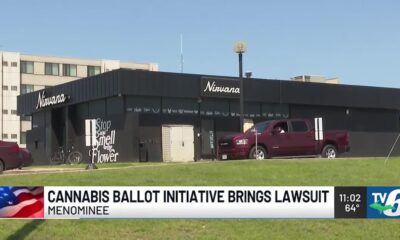

Cannabis ballot initiative brings lawsuit to Menominee
-


Proposed DOJ Rule Says Marijuana Users Likely Wouldn’t Be Eligible To Have Gun Rights Restored
-
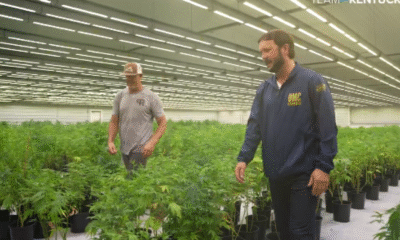

Kentucky medical marijuana cultivator brings in half-grown plants to speed harvest
-
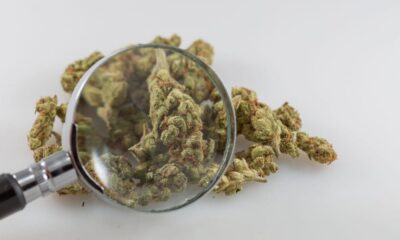

Federal Researchers Claim First-Ever Detection Of Cannabinoids In Human Breath After Use Of Marijuana Edibles
-
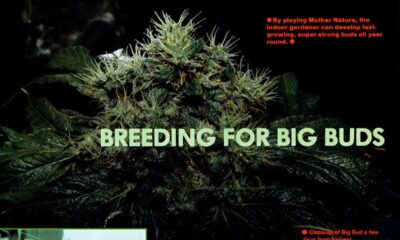

BREEDING FOR BIG BUDS (1986)
featured
Federal Report Shows Youth Marijuana Use ‘Remained Stable’ Even As More States Legalized In Recent Years
Published
10 minutes agoon
July 29, 2025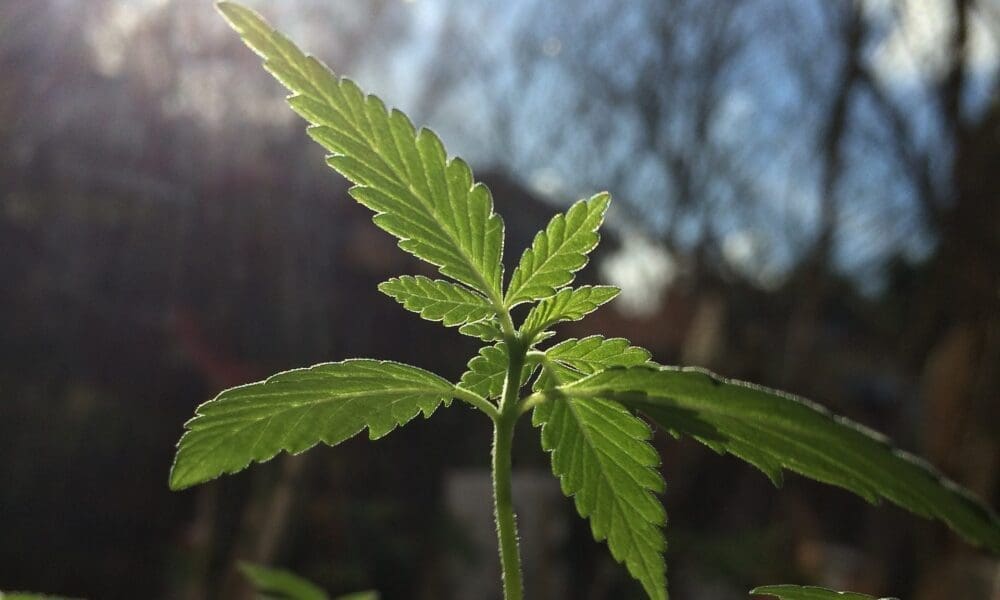
New federal health data indicate that while past-year marijuana use in the U.S. overall has climbed in recent years, the rise has been “driven by increases…among adults 26 years or older.” As for younger Americans, rates of both past-year use and cannabis use disorder, by contrast, “remained stable among adolescents and young adults between 2021 and 2024.”
In fact, past-year use among people ages 12 to 20 fell to a four-year low in 2024, the data show—even as a growing number of states enact laws legalizing marijuana for people over the age of 21. The results are contrary to arguments voiced by prohibitionist advocates who have long argued that it is important to keep cannabis illegal for adults in order to prevent youth use.
The data published by the Substance Abuse and Mental Health Services Administration (SAMHSA) come from the agency’s release of results from the latest National Survey on Drug Use and Health (NSDUH), which annually since 1971 has asked Americans ages 12 and older questions about their drug use, mental health and related treatment.
“The annual NSDUH provides timely statistical information on substance use and mental health in the U.S.,” SAMHSA Principal Deputy Assistant Secretary Art Kleinschmidt said in an agency press release Monday. “These data are incredibly valuable to researchers, clinicians, policymakers, and others, allowing for greater understanding of the nation’s behavioral health, and to help inform actions in support of President Trump’s vision to Make America Healthy Again.”
Among all respondents, the poll found, self-reported marijuana use within the past 12 months rose from 19.0 percent in 2021 to 22.3 percent last year.
While the SAMHSA press release sent on Monday about the report doesn’t highlight different trends by age levels, companion data from the survey distinguish the overall rise in marijuana use from stable or declining trends among “underage” Americans, aged 12 to 20.
In 2024, the reported rate of past-year cannabis use among that age group was 16.7 percent, hitting a four-year low.
The rate rose between 2021 (17.9 percent) and 2022 (19.2 percent), then fell during the next to years to 18.4 percent in 2023 and 16.7 percent last year.
2024 National Survey on Drug Use and Mental Health, SAMHSA
Between 2021 and 2024, the states of Connecticut, Delaware, Maryland, Minnesota, Missouri, New Mexico, New York, Ohio, Rhode Island and Virginia all legalized cannabis for adults over 21 year of age.
A supporting graphic in from SAMHSA also breaks down use by age group somewhat.
It shows that young adults, ages 18 to 25, remain most likely to have used marijuana in the past year, at 35 percent—though that rate was lower than at any other point since 2021.
About 1 in 10 young people ages 18 to 25 (10.4 percent) reported past-year use, meanwhile—also lower than at any other time over the four-year period.

2024 National Survey on Drug Use and Mental Health, SAMHSA
SAMHSA cautioned that given increases in adult use of marijuana, the generally stable trends among youth use shouldn’t be taken for granted.
“The increases in past-year illicit drug use and past-year drug use disorders are largely driven by increases in marijuana use and marijuana use disorder among adults 26 years or older,” the federal report says. “Although marijuana use and use disorder trends remained stable among adolescents and young adults between 2021 and 2024, the increase in adult use is important to inform prevention and treatment activities given changing attitudes around marijuana use and the shifting state policy landscape which has increased risk for marijuana use and use disorder among young people, and enabled the ready availability of high-potency marijuana products linked to negative health impacts in communities across the country.”
Other notable substance-related findings from the new survey include that past-year use of hallucinogens increased among all Americans 12 and older, from 2.7 percent in 2021 to 3.6 percent last year.
Past-year cocaine use declined slightly over the same time period, from 1.7 percent to 1.5 percent. Prescription opioid misuse also diminished from 3.0 percent to 2.6 percent.
People with any sort of drug use disorder during the past year, meanwhile, increased from 8.7 precent to 9.8 percent. Those figures do not include alcohol use disorder, which decreased from 10.6 percent to 9.7 percent.
Overall, 16.8 percent of Americans—48.4 million people—reported some sort of substance use disorder in 2024, the NSDUH data show.
Questions related to recovery, meanwhile, found that “1.7 million adults aged 18 or older (or 12.2%) perceived that they ever had a problem with their use of alcohol or drugs,” SAMHSA said. “Among these adults, 74.3% (or 23.5 million people) considered themselves to be in recovery or to have recovered.”

2024 National Survey on Drug Use and Mental Health, SAMHSA
Other questions looked at modes of marijuana use, finding that combustion remains the most popular form of consumption, with 73.9 percent of cannabis users reporting smoking within the past year. About half (49.8 percent) ate or drank cannabis products, while 39.8 reported vaping, 14.1 reported dabbing and 14.1 reported “some other mode of marijuana use.”
Respondents were able to choose as many responses to that question as applied.
As for vaping specifically, the data show it’s especially common among younger marijuana users, with 71.1 percent of respondents 12 to 17 saying they vaped cannabis in the past year. Among those 18 to 25, 52.0 percent said they had vaped, meanwhile, as did 33.0 percent of those 26 or older.

2024 National Survey on Drug Use and Mental Health, SAMHSA
Overall, 38.0 percent of cannabis consumers 12 and older said they vaped marijuana in 2024, while 62.0 percent said they used cannabis but did not vape.
SAMHSA’s report on the NSDUH findings a year ago also included a longer-term look at marijuana use trends, finding that youth use appeared to have fallen significantly in the preceding decade, as dozens of states legalized marijuana for adult or medical use.
The percentage of young people aged 12 to 17 who had ever tried marijuana, for example, dropped by 18 percent from 2014—when the first legal recreational cannabis sales in the U.S. launched—to 2023. Past-year and past-month use rates among young people also declined during that time period.
While the NSDUH survey has been conducted for decades, its methodology has changed over the years, making some historical comparisons difficult or impossible. Data from recent years, including 2023, 2022 and 2021 “should not be combined with data from 2020 or prior years for a variety of methodological reasons,” a SAMHSA spokesperson said last year in an email about that report.
A year earlier, in 2022, NSDUH for the first time asked respondents about their methods of marijuana consumption—including “smoking; vaping; dabbing waxes, shatter, or concentrates; eating or drinking; putting drops, strips, lozenges, or sprays in their mouth or under their tongue; applying lotion, cream, or patches to their skin; taking pills; or some other way.”
Release of the latest NSDUH data comes on the heels of a SAMHSA webinar earlier this month in which a Johns Hopkins University researcher acknowledged that self-reported cannabis consumption by adults has risen as more states have legalized, while use by youth has generally remained flat or fallen.
“Use among youth is one of the biggest areas of concern related to the legalization and increased accessibility of cannabis,” the presenter said, “but surprisingly, that cohort has actually maintained relatively stable [for] both past-year and daily use.”
A separate secret shopper study out of New York City earlier this year found that state-licensed marijuana retailers were far more consistent about discouraging youth access to cannabis compared to illicit stores, with regulated outlets consistently verifying the age of would-be buyers as well as avoiding cartoon signage and products that appeal to young people.
All of the licensed retailers that were observed checked purchasers’ ID both before store entry and prior to purchase, that study found. Unregulated stores, by contrast, checked IDs before entry only 10 percent of the time, and verified ages before purchase less than half (48 percent) of the time.
Across the U.S., research suggests that marijuana use by young people has generally fallen in states that legalize the drug for adults.
A report from the advocacy group Marijuana Policy Project (MPP), for example, found that youth marijuana use declined in 19 out of 21 states that legalized adult-use marijuana—with teen cannabis consumption down an average of 35 percent in the earliest states to legalize.
The report cited data from a series of national and state-level youth surveys, including the annual Monitoring the Future (MTF) Survey, which is supported by the National Institute on Drug Abuse (NIDA).
The latest version of the MTF, released late last year, found that cannabis use among eighth, 10th and 12 graders is now lower than before the first states started enacting adult-use legalization laws in 2012. There was also a significant drop in perceptions by youth that cannabis is easy to access in 2024 despite the widening adult-use marketplace.
Another survey from the U.S. Centers for Disease Control and Prevention (CDC) last year also showed a decline in the proportion of high-school students reporting past-month marijuana use over the past decade, as dozens of states moved to legalize cannabis.
At the state level, MPP’s assessment looked at research such as the Washington State Healthy Youth Survey that was released in April 2024.
That survey showed declines in both lifetime and past-30-day marijuana use in recent years, with striking drops that held steady through 2023. The results also indicated that perceived ease of access to cannabis among underage students has generally fallen since the state enacted legalization for adults in 2012—contrary to fears repeatedly expressed by opponents of the policy change.
In June of last year, meanwhile, the biannual Healthy Kids Colorado Survey found that rates of youth marijuana use in the state declined slightly in 2023—remaining significantly lower than before the state became one of the first in the U.S. to legalize cannabis for adults in 2012.
The findings broadly track with other past surveys that have investigated the relationship between jurisdictions that have legalized marijuana and youth cannabis use.
For example, a Canadian government report recently found that daily or near-daily use rates by both adults and youth have held steady over the last six years after the country enacted legalization.
Another U.S. study reported a “significant decrease” in youth marijuana use from 2011 to 2021—a period in which more than a dozen states legalized marijuana for adults—detailing lower rates of both lifetime and past-month use by high-school students nationwide.
Another federal report published last summer concluded that cannabis consumption among minors—defined as people 12 to 20 years of age—fell slightly between 2022 and 2023.
Separately, a research letter published by the Journal of the American Medical Association (JAMA) in April 2024 said there’s no evidence that states’ adoption of laws to legalize and regulate marijuana for adults have led to an increase in youth use of cannabis.
Another JAMA-published study earlier that month that similarly found that neither legalization nor the opening of retail stores led to increases in youth cannabis use.
In 2023, meanwhile, a U.S. health official said that teen marijuana use has not increased “even as state legalization has proliferated across the country.”
Another earlier analysis from the U.S. Centers for Disease Control and Prevention found that rates of current and lifetime cannabis use among high school students have continued to drop amid the legalization movement.
A separate NIDA-funded study published in the American Journal of Preventive Medicine in 2022 also found that state-level cannabis legalization was not associated with increased youth use. The study demonstrated that “youth who spent more of their adolescence under legalization were no more or less likely to have used cannabis at age 15 years than adolescents who spent little or no time under legalization.”
Yet another 2022 study from Michigan State University researchers, published in the journal PLOS One, found that “cannabis retail sales might be followed by the increased occurrence of cannabis onsets for older adults” in legal states, “but not for underage persons who cannot buy cannabis products in a retail outlet.”
The trends were observed despite adult use of marijuana and certain psychedelics reaching “historic highs” in 2022, according to separate 2023 data.

Author: mscannabiz.com
MScannaBIZ for all you Mississippi Cannabis News and Information.
featured
Proposed DOJ Rule Says Marijuana Users Likely Wouldn’t Be Eligible To Have Gun Rights Restored
Published
1 hour agoon
July 29, 2025
The U.S. Department of Justice (DOJ) is accepting public comments on a proposed rule that would provide guidance around the government’s restoration of Second Amendment gun rights for people who’ve been disarmed under federal law. But the department says certain applicants—including users of marijuana—”would be presumptively ineligible for relief and therefore denied relief absent extraordinary circumstances” because they appear to have “a lack of respect for the law and potential dangerousness.”
The DOJ filing, signed by Attorney General Pam Bondi and published last week, lists cannabis consumers and other “unlawful users of controlled substances” as among a number of categories of applicants who would presumably not qualify for relief under the proposed rule.
Under a federal law known as Section 922(g)(3), unlawful drug users—including of state-legal marijuana—are prohibited from purchasing or possessing firearms or ammunition. But in recent months, a flurry of appeals court decisions have questioned the blanket ban’s legality, for example ruling that the restriction is constitutional only in certain circumstances.
DOJ’s filing doubles down on the government’s position in multiple court cases that marijuana users have no Second Amendment rights because the drug inherently makes people dangerous.
“Persons currently subject to the prohibitions in 922…(g)(3) (unlawful users of controlled substances)…would presumptively be denied relief because, having an adjudicated status that indicates a lack of respect for the law and potential dangerousness, they are unlikely to meet the statutory criteria,” it says
At the same time, the proposed rule also says the attorney general, in considering applicants’ requests to have their gun rights restored, “would not be bound by the artificial limits of the categorical approach,” noting that officials’ “decision whether to grant relief will be based on all the relevant circumstances, rather than a blindered approach that looks only at the facts that led to the applicant’s federal firearm disability.”
The rule doesn’t mean that people with past convictions around drug use would necessarily be denied relief, though it does suggest applications from current unlawful drug users would be rejected.
A different portion of the federal statute, 922(g)(1), prohibits gun ownership by anyone “who has been convicted in any court of, a crime punishable by imprisonment for a term exceeding one year.” Someone with a past felony conviction for cannabis possession might be eligible to have their rights restored under the proposed rule, but not if they’re currently prohibited under 922(g)(3) as a current consumer.
Someone with a past drug use conviction who no longer uses drugs, however, might be able to have their rights restored, as the proposed rule states that “such persons can ordinarily take themselves out of the prohibited category by discontinuing their unlawful conduct.”
Notably under the proposed rule, applications for relief would be reported to the “chief law enforcement officer in the locality where the individual lives.” Local law enforcement could also serve as “a conduit for other individuals to submit relevant information about the applicant.”
Public feedback on proposal will be accepted for 90 days, ending on October 20. Comments can be filed through the DOJ posting on the Federal Register.
A number of federal courts in recent months have cast doubt on the legality of § 922(g)(3), finding generally that while the ban on gun ownership among drug users may not be entirely unconstitutional, there’s scant historical precedent for such a broad restriction of Second Amendment rights on an entire a category of people.
Last week, for example, a three-judge panel for the U.S. Court of Appeals for the Eighth Circuit vacated a defendant’s conviction under 922(g)(3) and remanded the case back to a lower court for a possible retrial. That came after a previous Eighth Circuit opinion in February said the prohibition on gun ownership by drug users is justified only in certain circumstances—not always.
Notably, the new Eighth Circuit opinion appears to differ from a recent Third Circuit ruling in that the new decision says that not every application of 922(g)(3) “require[s] an individualized factual determination,” explaining that such determinations wouldn’t be necessary if the government could demonstrate that a particular drug made an entire class of users dangerous.
By contrast, the Third Circuit earlier this month said in a published opinion that district courts must make “individualized judgments” to determine whether 922(g)(3) is constitutional as applied to particular defendants.
The appeals panel ruled that while a person “need not have harmed someone, threatened harm, or otherwise acted dangerously to justify his disarmament,” the history of gun laws in the country requires that “district courts must make individualized judgments and conclude that disarming a drug user is needed to address a risk that he would pose a physical danger to others.”
Judges in that case noted that historical restrictions on gun ownership under “drunkenness and lunacy laws” in the U.S. “were still always based on an ‘individualized assessment’ rather than a categorical judgment.”
As a recent report from the Congressional Research Service explained the current legal landscape, a growing number of federal courts are now “finding constitutional problems in the application of at least some parts” of the firearms prohibition.
The matter could soon be taken up by the U.S. Supreme Court. In a recent petition for review by justices, U.S. Solicitor General D. John Sauer argued that despite recent appeals court decisions calling the constitutionality of the firearms ban into question, the restriction is nevertheless lawful.
“Section 922(g)(3) complies with the Second Amendment,” the government’s filing in that case, U.S. v. Hemani, maintains. “That provision targets a category of persons who pose a clear danger of misusing firearms: habitual users of unlawful drugs.”
The federal statute “bars their possession of firearms only temporarily,” the government petition says, “and leaves it within their power to lift the restriction at any time; anyone who stops habitually using illegal drugs can resume possessing firearms.”
Notably, while the government mentioned “habitual” users of illegal drugs 40 times in its Supreme Court filing, the word does not itself appear in 922(g)(3). The language of the statute prohibits anyone “who is an unlawful user of or addicted to any controlled substance” from purchasing or possessing firearms or ammunition.
While DOJ is asking the high court to take up the Hemani case, at least two other, similar cases are waiting in the wings: U.S. v. Cooper and U.S. v. Baxter both of which also hinge on the constitutionality of 922(g)(3).
In Cooper, an Eighth Circuit U.S. Court of Appeals panel dismissed a three-year prison sentence against a person convicted for possession of a firearm while being an active user of marijuana. Judges in that case ruled that government’s prohibition on gun ownership by drug users is justified only in certain circumstances—not always.
“Nothing in our tradition allows disarmament simply because [the defendant] belongs to a category of people, drug users, that Congress has categorically deemed dangerous,” their ruling said.
The justices are set to discuss the case in a private meeting in September.
In Baxter, the Eighth Circuit ruled 922(g)(3) unconstitutional as applied to the facts in the case.
Judges in that case wrote that there were insufficient factual findings in the record “for this Court to review Baxter’s as-applied Second Amendment challenge.” Nevertheless, the they wrote, “We reverse the district court’s ruling on Baxter’s as-applied Second Amendment challenge and remand to the district court for further proceedings consistent with this opinion.”
In recent weeks, the government has sought further time from the court to decide whether to seek an appeal in the other cases. And when DOJ filed its appeal in Cooper, it further asked the court to slow walk the case, requesting justices “hold the petition for a writ of certiorari pending the disposition of the petition in United States v. Hemani…and should then dispose of this petition as appropriate.”
One reason DOJ could be focused on the high court taking up Hemani in particular is that the defendant is not only a cannabis user but also a user of cocaine who’s sold drugs in the past, perhaps reasoning that he is a less sympathetic face of drug consumers’ gun rights. Defendants in the other cases were merely found in possession of both a firearm and marijuana.
If the Supreme Court takes up Hemani and declares 922(g)(3) constitutional, such a ruling could could mean government wins in the remaining cases.
One risk to the government appealing the lower court rulings are that if the Supreme Court does take the case, justices may in fact rule unfavorably to the government, possibly cementing that § 922(g)(3) is—in at least some cases—unconstitutional.
Earlier this year, a federal judge in Rhode Island ruled that the ban was unconstitutional as applied to two defendants, writing that the government failed to establish that the “sweeping” prohibition against gun ownership by marijuana users was grounded in historical precedent.
The Fifth Circuit’s Daniels ruling—in a three-judge panel ruled that the firearms ban was unconstitutional as applied—came on the heels of a string of other judicial decisions casting doubt on the legality of the ban.
A federal judge in El Paso, for instance, ruled late last year that the government’s ongoing ban on gun ownership by habitual marijuana users is unconstitutional in the case of a defendant who earlier pleaded guilty to the criminal charge. The court allowed the man to withdraw the plea and ordered that the indictment against him be dismissed.
Another panel of judges, on the U.S. Court of Appeals for the Tenth Circuit, heard oral arguments in November in the government’s appeal of a district court ruling that deemed the gun ban unconstitutional.
In a number of the ongoing cases, DOJ has argued that the prohibition on gun ownership by marijuana users is also supported by a recent U.S. Supreme Court decision, U.S. v. Rahimi, that upheld the government’s ability to limit the Second Amendment rights of people with domestic violence restraining orders.
DOJ has made such arguments, for example, in favor of the firearms ban in a case in a case in the U.S. Court of Appeals for the Eleventh Circuit. In that matter, a group of Florida medical cannabis patients contends that their Second Amendment rights are being violated because they cannot lawfully buy firearms so long as they are using cannabis as medicine, despite acting in compliance with state law.
DOJ under President Joe Biden consistently argued that medical marijuana patients who possess firearms “endanger public safety,” “pose a greater risk of suicide” and are more likely to commit crimes “to fund their drug habit.”
It remains unclear how the Trump administration will approach the cases. At a NRA conference in 2023, Trump suggested there might be a link between the use of “genetically engineered” marijuana and mass shootings. He listed a number of controversial and unproven factors that he said at the time he would direct the Food and Drug Administration (FDA) to investigate as possibly causing the ongoing scourge of mass shooting afflicting the country.
“We have to look at whether common psychiatric drugs, as well as genetically engineered cannabis and other narcotics, are causing psychotic breaks” that lead to gun violence, he said.
DOJ has claimed in multiple federal cases over the past several years that the statute banning cannabis consumers from owning or possessing guns is constitutional because it’s consistent with the nation’s history of disarming “dangerous” individuals.
In 2023, for example, the Justice Department told the U.S. Court of Appeals for the Third Circuit that historical precedent “comfortably” supports the restriction. Cannabis consumers with guns pose a unique danger to society, the Biden administration claimed, in part because they’re “unlikely” to store their weapon properly.
Last year, Biden’s son Hunter was convicted by a federal jury of violating statute by buying and possessing a gun while an active user of crack cocaine. Two Republican congressmen challenged the basis of that conviction, with one pointing out that there are “millions of marijuana users” who own guns but should not be prosecuted.
The situation has caused confusion among medical marijuana patients, state lawmakers and advocacy groups, among others. The National Rifle Association’s (NRA) lobbying arm said recently that the court rulings on the cannabis and guns issue have “led to a confusing regulatory landscape” that have impacted Americans’ Second Amendment rights.
“Marijuana use is no longer limited to the domain of indigenous religious customs or youth-oriented counterculture and now includes a wide variety of people who use it for medicinal or recreational reasons,” said the advocacy group, which does not have an official stance on cannabis policy generally. “Many of these individuals are otherwise law-abiding and productive members of their communities and want to exercise their right to keep and bear arms.”
Meanwhile, some states have passed their own laws either further restricting or attempting to preserve gun rights as they relate to marijuana. Recently a Pennsylvania lawmaker introduced a bill meant to remove state barriers to medical marijuana patients carrying firearms.
Colorado activists also attempted to qualify an initiative for November’s ballot that would have protected the Second Amendment rights of marijuana consumers in that state, but the campaign’s signature-gathering drive ultimately fell short.
As 2024 drew to a close, the ATF issued a warning to Kentucky residents that, if they choose to participate in the state’s medical marijuana program that’s set to launch imminently, they will be prohibited from buying or possessing firearms under federal law.
The official said that while people who already own firearms aren’t “expected to” turn them over if they become state-legal cannabis patients, those who “wish to follow federal law and not be in violation of it” must “make the decision to divest themselves of those firearms.”
Since then, bipartisan state lawmakers have introduced legislation that would urge Kentucky’s representatives in Congress to amend federal law to clarify that users of medical marijuana may legally possess firearms, though no action has since been taken on that bill.
Kentucky Gov. Andy Beshear (D) said in January that he supported the legislature’s effort to urge the state’s congressional delegation to call for federal reforms to protect the Second Amendment rights of medical marijuana patients, but the governor added that he’d like to see even more sweeping change on the federal level.
“I think the right way to deal with that is not just to focus on that issue, but to change the schedule of marijuana,” Beshear said at a press conference. “What we need to change is the overall marijuana policy by the federal government.”

Author: mscannabiz.com
MScannaBIZ for all you Mississippi Cannabis News and Information.
featured
Federal Researchers Claim First-Ever Detection Of Cannabinoids In Human Breath After Use Of Marijuana Edibles
Published
2 hours agoon
July 29, 2025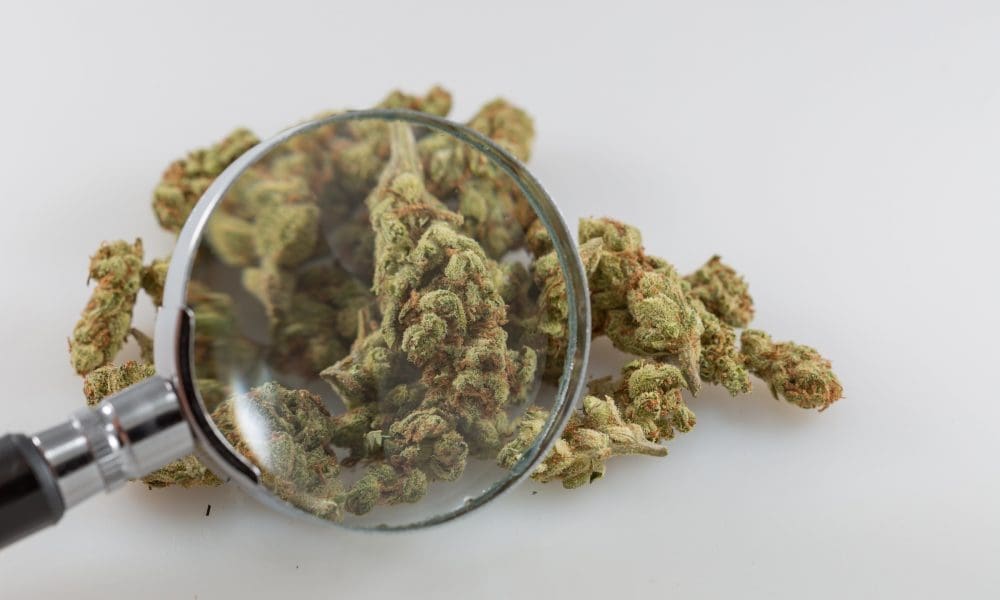
Federal researchers at the National Institute of Standards and Technology (NIST) say they’ve made the first-ever detection of THC in human breath following the consumption of infused edibles—a possible step forward in terms of field testing for cannabis impairment.
But more research is necessary, they add, pointing to “uncertainty of breath measurements” and the need to further analyze the detectability of cannabinoids over longer time periods.
“This is an important step forward, that we can detect THC increases in breath after the ingestion of cannabis,” Jennifer Berry, a NIST research chemist and the lead author on the paper, said in an agency release about the new findings, which were published earlier this month in the Journal of Analytical Toxicology.
Three NIST researchers and one from University of Colorado Anschutz Medical teamed up on the project, which the report describes as a “proof-of-concept study.” It’s part of the federal agency’s broader research into cannabis use and driving performance.
Breath samples of 29 participants were collected before and after ingesting a THC-infused edible, which subjects were asked to bring in themselves. The products ranged in strength from five milligrams to 100 mg THC, though the report notes the amounts were not independently verified.
“NIST and its partners at University of Colorado Anschutz have made the first measurement of tetrahydrocannabinol (THC) in breath from edible cannabis.”
Collection was done using two different devices, one described as an aerosol device and the other as a condensate device. Samples were taken before ingestion and at three timepoints afterward: roughly 47 minutes, 92 minutes and 180 minutes.
Though participants were instructed to abstain from using edible cannabis for 12 hours prior to the study and from inhaling cannabis for 8 hours ahead of time, samples for nearly all participants detected THC even before they ingested the infused edibles.
“THC was detected in breath samples from 27 of the 29 participants before edible ingestion, ranging from trace (10 participants) to greater than 0.4 ng/device,” the report says, noting that similar phenomena around residual THC had been observed in prior studies.
“The finding of detectable and/or quantifiable THC before cannabis use,” authors wrote, “shows how challenging it is to interpret a single THC concentration measurement in breath with no prior information about THC at baseline.”
“The high detection rate of THC in breath after 8 h of requested abstinence,” they added later in the report, “shows that identifying recent use from a single measurement is challenging from any matrix.”
After ingesting the edibles, measured THC levels in the breath of most participants—but not all—rose over time.
“Of the 29 participants in this study, 19 showed a significant increase in THC concentration after edible ingestion (at any of the three post-use timepoints), 4 showed no change, and 6 showed a significant decrease in THC concentration after edible use,” the study says.
Those who showed a decrease in THC levels, it points out, also reported some of the highest THC levels prior to taking the edibles.
Those whose THC breath levels rose or remained stable, however, support the notion that breath-based tests can detect recent cannabis use, authors asserted.
“Breath samples from two-thirds of the participants in this study showed an increase in THC concentration after cannabis ingestion,” they wrote, “but the remaining one-third are not necessarily inconsistent with the hypothesis that recent cannabis use can be detected in breath, regardless of the mode of use.”
Notably, measured levels of THC and some other cannabinoids seem to change in similar ways. But THC and CBD levels didn’t always track with each other.
“When detected, CBN and CBG matched THC trends, but there were multiple instances where CBD and THC disagreed,” the study says, “suggesting differences in biological processing or clearance.”
In the NIST press release, Tara Lovestead, a chemical engineer on the breath research project, said the study “supports the idea that multiple breath measurements over a period of time could be a way to use a breathalyzer to detect cannabis use, regardless of how it’s ingested.”
“However,” the scientist added, “devices will still need standards to ensure that they are accurate and used correctly, standards that don’t yet exist.”
NIST notes in its press release that the agency itself is not developing a cannabis breath-testing device. “Instead, NIST’s role is to help ensure that measurements of cannabis in breath can be accurate, reliable and have scientifically sound standards behind them,” it says.
“Looking forward, we can now tackle the question of when THC increases after edible ingestion, when it goes back to baseline, and how to analyze breathalyzer data to get the information needed.” said Kavita Jeerage, a NIST research chemical engineer who the agency’s cannabis breath research.
The agency is set to host a workshop with device makers in September.
The event was originally scheduled to be held in Boulder, Colorado, in April, but a month ahead of the originally scheduled event, it was abruptly postponed.
According to a preliminary agenda sent to Marijuana Moment by NIST earlier this year, topics to be discussed will include challenges facing marijuana breathalyzer design and development, obstacles to prosecutors handling drugged-driving cases and how NIST and others might partner to advance the technology.
Findings of the workshop, “Building a Path Forward for Meaningful Cannabis Breathalyzer Realization,” are set to be compiled into a NIST internal report that the agency has said will be publicly available.
Unlike with alcohol, there’s currently no widely accepted field test to determine whether someone is under the influence of marijuana.
In 2023, a federally funded report by researchers at NIST and the University of Colorado Boulder concluded that evidence does “not support the idea that detecting THC in breath as a single measurement could reliably indicate recent cannabis use.”
“A lot more research is needed to show that a cannabis breathalyzer can produce useful results,” Jeerage at NIST said at the time. “A breathalyzer test can have a huge impact on a person’s life, so people should have confidence that the results are accurate.”
More recently, a U.S. Department of Justice researcher cast doubt on whether a person’s THC levels are even a reliable indicator of impairment.
States may need to “get away from that idea,” Frances Scott, a physical scientist at the National Institute of Justice (NIJ) Office of Investigative and Forensic Sciences under DOJ, said on a podcast early last year.
Scott questioned the efficacy of setting “per se” THC limits for driving that some states have enacted, making it so a person can be charged with driving while impaired based on the concentration of cannabis components in their system. Ultimately, there may not be a way to assess impairment from THC like we do for alcohol, she said.
One complication is that “if you have chronic users versus infrequent users, they have very different concentrations correlated to different effects,” Scott said. “So the same effect level, if you will, will be correlated with a very different concentration of THC in the blood of a chronic user versus an infrequent user.”
That issue was also examined in a federally funded study last year that identified two different methods of more accurately testing for recent THC use that accounts for the fact that metabolites of the cannabinoid can stay present in a person’s system for weeks or months after consumption.
The THC impairment question has nevertheless been a major focus for lawmakers and the research community, particularly as it concerns driving laws.
Last October, a study preprint posted on The Lancet by an eight-author team representing Canada’s Centre for Addiction and Mental Health, Health Canada and Thomas Jefferson University in Philadelphia identified and assessed a dozen peer-reviewed studies measuring “the strength of the linear relationship between driving outcomes and blood THC” published through September 2023.
“The consensus is that there is no linear relationship of blood THC to driving,” the paper concluded. “This is surprising given that blood THC is used to detect cannabis-impaired driving.”
Most states where cannabis is legal measure THC intoxication by whether or not someone’s blood THC levels are below a certain cutoff. The study’s findings suggest that relying on blood levels alone may not accurately reflect whether someone’s driving is impaired.
“Of the 12 papers included in the present review,” authors wrote, “ten found no correlation between blood THC and any measure of driving, including [standard deviation of lateral position (SDLP)], speed, car following, reaction time, or overall driving performance. The two papers that did find a significant association were from the same study and found significant relationship with blood THC and SDLP, speed and following distance.”
Earlier last year, researchers behind a federally funded study said they’d developed new procedures to enhance the selectivity of a popular forensic testing method, allowing better detection of delta-9 THC and its metabolites in blood.
A 2023 congressional report for a Transportation, Housing and Urban Development, and Related Agencies (THUD) bill said that the House Appropriations Committee “continues to support the development of an objective standard to measure marijuana impairment and a related field sobriety test to ensure highway safety.”
A year earlier Sen. John Hickenlooper (D) of Colorado sent a letter to the Department of Transportation (DOT) seeking an update on that status of a federal report into research barriers that are inhibiting the development of a standardized test for marijuana impairment on the roads. The department was required to complete the report under a large-scale infrastructure bill that President Joe Biden signed, but it missed its reporting deadline.
A study published in 2019 concluded that those who drive at the legal THC limit—which is typically between two to five nanograms of THC per milliliter of blood—were not statistically more likely to be involved in an accident compared to people who haven’t used marijuana.
Separately, the Congressional Research Service in 2019 determined that while “marijuana consumption can affect a person’s response times and motor performance … studies of the impact of marijuana consumption on a driver’s risk of being involved in a crash have produced conflicting results, with some studies finding little or no increased risk of a crash from marijuana usage.”
Another study from 2022 found that smoking CBD-rich marijuana had “no significant impact” on driving ability, despite the fact that all study participants exceeded the per se limit for THC in their blood.
Evan as far back as 2015, a U.S. National Highway Traffic Safety Administration (NHTSA) concluded that it’s “difficult to establish a relationship between a person’s THC blood or plasma concentration and performance impairing effects,” adding that “it is inadvisable to try and predict effects based on blood THC concentrations alone.”
In a separate report last year, NHTSA said there’s “relatively little research” backing the idea that THC concentration in the blood can be used to determine impairment, again calling into question laws in several states that set “per se” limits for cannabinoid metabolites.
“Several states have determined legal per se definitions of cannabis impairment, but relatively little research supports their relationship to crash risk,” that report said. “Unlike the research consensus that establishes a clear correlation between [blood alcohol content] and crash risk, drug concentration in blood does not correlate to driving impairment.”
Earlier this month, meanwhile, a Rutgers University law professor published commentary arguing that roadside tests for marijuana impairment used widely by police departments across the country are “inadequate” and “pseuduscientific,” urging policymakers to take a more evidence-based robust approach to transportation safety while relying less on law enforcement’s ostensible expertise.
The paper, by William J. McNichol of Rutgers University’s Camden School of Law, asserts that current approaches to detecting cannabis impairment “either merely imitate tools used to identify alcohol based impairment without taking into account important differences between the effects of these molecules or they are pseudoscientific ‘police science.’”

Author: mscannabiz.com
MScannaBIZ for all you Mississippi Cannabis News and Information.

Federal Report Shows Youth Marijuana Use ‘Remained Stable’ Even As More States Legalized In Recent Years

Cannabis ballot initiative brings lawsuit to Menominee

Proposed DOJ Rule Says Marijuana Users Likely Wouldn’t Be Eligible To Have Gun Rights Restored

Kentucky medical marijuana cultivator brings in half-grown plants to speed harvest

Federal Researchers Claim First-Ever Detection Of Cannabinoids In Human Breath After Use Of Marijuana Edibles

BREEDING FOR BIG BUDS (1986)

New DEA Admin Sidelines Cannabis Rescheduling Despite Earlier Promises

New Rules in New Zealand Place Strict Guidelines on Medical Cannabis ‘Advertising’

South Beloit blood donors get marijuana products for their contribution

Oklahoma Campaign to Legalize Adult-Use Cannabis Will Begin Collecting Signatures Next Month

Bellbrook leaders pass ordinance banning marijuana sales

PackworldUSA Highlights Versatile, Precision-Driven 3400 Series Heat Sealer for Cannabis Applications

Federal Court Sides With Safe Drug Consumption Site, Saying Religious Protections Apply

Trump’s New DEA Administrator Omits Cannabis Rescheduling From Top Priorities

High Times, RAW and hhemp.co Forge New Era of Pre‑Rolls, Vapes & Hemp Products

Bill To Ban Hemp Products With THC Is Filed In Texas House, As Governor Continues To Call For Regulations Instead

Illness linked to cannabis use sending more patients to the hospital, including NC woman

Chicagoland Cookies Dispensary Opens in Illinois

Is the Wait Over for Colombian Patients? Government May Allow Sale of Medical Cannabis Flowers

NORML Remembers Richard Lee – NORML

Bipartisan Coalition of 32 Attorneys General Call for Federal Cannabis Banking Reforms

Trump Backs Pro-Marijuana-Legalization Lawmaker To Lead Republican National Committee

Some Jokes To Bring A Monday Smile

Grön Acquires New York Cannabis License

Alert: Department of Cannabis Control updates data dashboards with full data for 2023

Connecticut Appoints The US’s First Cannabis Ombudsperson – Yes there is a pun in there and I’m Sure Erin Kirk Is Going To Hear It More Than Once!

5 best CBD creams of 2024 by Leafly

EU initiative begins bid to open access to psychedelic therapies

Free delta-9 gummies from Bay Smokes
New Study Analyzes the Effects of THCV, CBD on Weight Loss

5 best autoflower seed banks of 2024 by Leafly

May 2024 Leafly HighLight: Pink Runtz strain

Mississippi city official pleads guilty to selling fake CBD products

Curaleaf Start Process Of Getting Their Claws Into The UK’s National Health System – With Former MP (Resigned Today 30/5/24) As The Front Man

Discover New York’s dankest cannabis brands [September 2024]

Press Release: CANNRA Calls for Farm Bill to Clarify Existing State Authority to Regulate Hemp Products

Local medical cannabis dispensary reacts to MSDH pulling Rapid Analytics License – WLBT

Horn Lake denies cannabis dispensary request to allow sale of drug paraphernalia and Sunday sales | News

Nevada CCB to Accept Applications for Cannabis Establishments in White Pine County – “Only one cultivation and one production license will be awarded in White Pine County”

5 best THC drinks of 2024 by Leafly

The Daily Hit: October 2, 2024

6 best CBD gummies of 2024 by Leafly

5 best delta-9 THC gummies of 2024 by Leafly

Weekly Update: Monday, May 13, 2024 including, New Guide for Renewals & May Board meeting application deadline

People In This State Googled ‘Medical Marijuana’ The Most, Study Shows

PRESS RELEASE : Justice Department Submits Proposed Regulation to Reschedule Marijuana

Thailand: Pro-cannabis advocates rally ahead of the government’s plan to recriminalize the plant

Press Release: May 9, STIIIZY and Healing Urban Barrios hosted an Expungement Clinic & Second Chance Resource Fair
Trending
-

 California Cannabis Updates1 year ago
California Cannabis Updates1 year agoAlert: Department of Cannabis Control updates data dashboards with full data for 2023
-

 Breaking News1 year ago
Breaking News1 year agoConnecticut Appoints The US’s First Cannabis Ombudsperson – Yes there is a pun in there and I’m Sure Erin Kirk Is Going To Hear It More Than Once!
-

 best list12 months ago
best list12 months ago5 best CBD creams of 2024 by Leafly
-

 Business10 months ago
Business10 months agoEU initiative begins bid to open access to psychedelic therapies
-

 Bay Smokes1 year ago
Bay Smokes1 year agoFree delta-9 gummies from Bay Smokes
-

 cbd1 year ago
cbd1 year agoNew Study Analyzes the Effects of THCV, CBD on Weight Loss
-

 autoflower seeds10 months ago
autoflower seeds10 months ago5 best autoflower seed banks of 2024 by Leafly
-

 California1 year ago
California1 year agoMay 2024 Leafly HighLight: Pink Runtz strain

